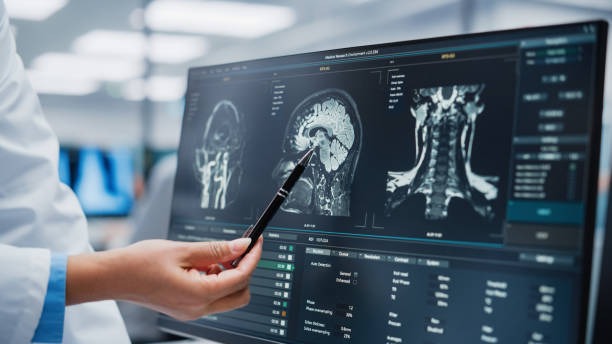The Human Brain: 5 Fascinating Neuroscience Discoveries You Need to Know
Your brain is a marvel—a 3-pound universe that powers every thought, emotion, and action. Did you know it generates enough electricity to power a small light bulb? Neuroscience is unraveling the mysteries of the human brain at an unprecedented pace, revealing discoveries that reshape how we understand ourselves. In this post, we dive into 5 fascinating neuroscience discoveries that highlight the brain’s complexity and potential. From rewiring itself to decoding thoughts with AI, these breakthroughs will blow your mind. Let’s explore how the brain works and what these findings mean for the future!


1. The Power of Neuroplasticity: Your Brain’s Ability to Rewire Itself
What Is Neuroplasticity?
Neuroplasticity is the brain’s remarkable ability to reorganize itself by forming new neural connections throughout life. Once thought to be fixed after childhood, we now know the brain is a dynamic organ, constantly adapting to new experiences, injuries, or learning.
The Discovery
A 2024 study published in Nature Neuroscience revealed how neuroplasticity helps stroke patients recover. Researchers found that targeted therapies, like transcranial magnetic stimulation, can “rewire” damaged brain circuits, restoring movement and speech. This breakthrough showed that even older brains remain highly adaptable with the right interventions.
Why It Matters
Neuroplasticity isn’t just for recovery—it’s key to learning new skills, overcoming trauma, and improving mental health. For example, mindfulness practices can strengthen neural pathways linked to emotional regulation. Want to boost your brain’s plasticity? Try learning a new language or instrument!
Source: Nature Neuroscience Study on Stroke Recovery
2. AI-Powered Brain Mapping: Decoding Thoughts in Real Time
What Is Brain Mapping?
Brain mapping uses tools like functional MRI (fMRI) to track neural activity. When paired with artificial intelligence, it can translate brain signals into images, words, or even actions.
The Discovery
In 2023, researchers at the University of Texas made headlines by using AI to reconstruct mental imagery from brain scans. Participants watched videos, and AI decoded their brain activity to recreate what they saw—almost like reading minds. By 2024, this technology advanced to predict speech patterns in real time.
Why It Matters
This discovery paves the way for brain-computer interfaces, enabling paralyzed individuals to communicate or control devices with their thoughts. Imagine typing a message just by thinking it! It also raises ethical questions about privacy and “thought surveillance.”
Source: Scientific American on AI Brain Mapping
3. The Gut-Brain Connection: How Your Microbiome Shapes Your Mind
What Is the Gut-Brain Axis?
The gut-brain axis is a two-way communication network linking your digestive system to your brain. Your gut’s microbiome—trillions of bacteria—plays a surprising role in mood, cognition, and mental health.
The Discovery
A 2024 study in Journal of Neuroscience found that specific gut bacteria produce neurotransmitters like serotonin, directly influencing anxiety and depression. Mice with altered microbiomes showed reduced stress responses after receiving probiotic treatments, hinting at new mental health therapies.
Why It Matters
This discovery suggests that diet and probiotics could treat conditions like depression or ADHD. Eating fermented foods like yogurt or kimchi might boost your brain health. It’s a reminder that your gut is your “second brain”!
Source: NIH on Gut-Brain Research
4. Sleep and Memory: Why Your Brain Needs Rest to Learn
Why Sleep Matters
During sleep, your brain processes information, consolidates memories, and “cleans” itself through synaptic pruning. Without enough rest, learning and focus suffer.
The Discovery
A 2024 study in Sleep journal revealed that REM (rapid eye movement) sleep enhances creative problem-solving. Researchers found that REM sleep strengthens neural connections tied to abstract thinking, helping you connect ideas in novel ways. Participants who got more REM sleep solved complex puzzles faster.
Why It Matters
This finding underscores why pulling an all-nighter is a bad idea. To boost memory and creativity, aim for 7–9 hours of sleep and prioritize a consistent schedule. Naps can help, too!
Source: Stanford Sleep Research
5. Brain Organoids: Growing Mini-Brains in the Lab
What Are Brain Organoids?
Brain organoids are tiny, lab-grown models of human brains, created from stem cells. They mimic basic brain structures and functions, offering a window into neural development.
The Discovery
In 2024, scientists at UC San Diego reported that brain organoids exhibited learning behaviors, forming neural patterns in response to stimuli. This breakthrough, published in Cell, showed organoids could model complex disorders like autism or Alzheimer’s.
Why It Matters
Organoids revolutionize drug testing and disease research, reducing reliance on animal models. They could lead to personalized treatments for neurological conditions. However, ethical debates arise about the “consciousness” of these mini-brains.
Source: The Scientist on Brain Organoids
Conclusion: The Future of Neuroscience
These 5 fascinating neuroscience discoveries reveal the human brain’s incredible complexity—from rewiring itself to communicating with your gut. Whether it’s AI decoding thoughts or mini-brains grown in labs, these breakthroughs are transforming medicine, technology, and our understanding of consciousness.
